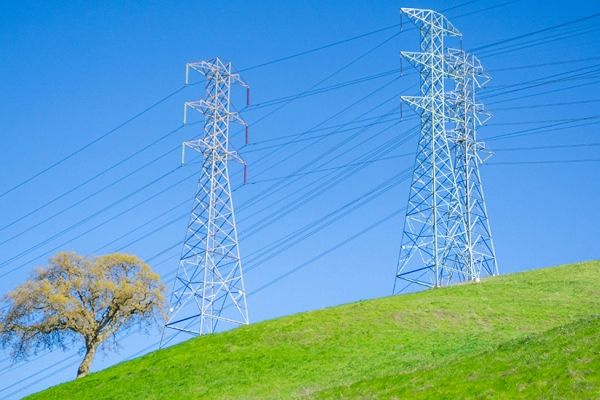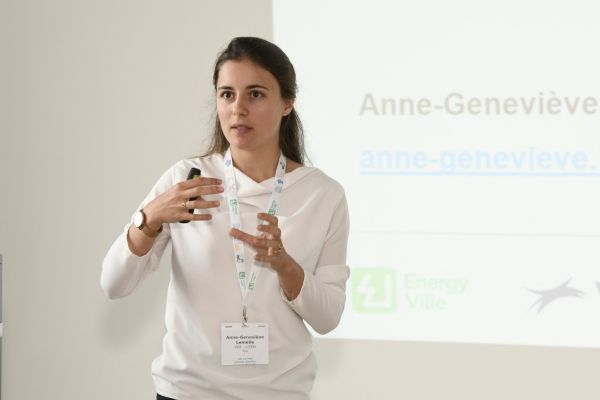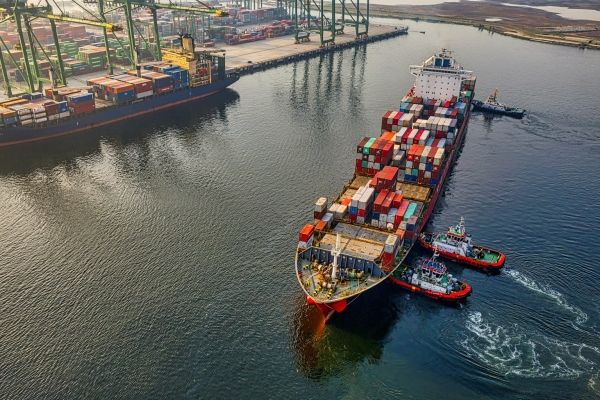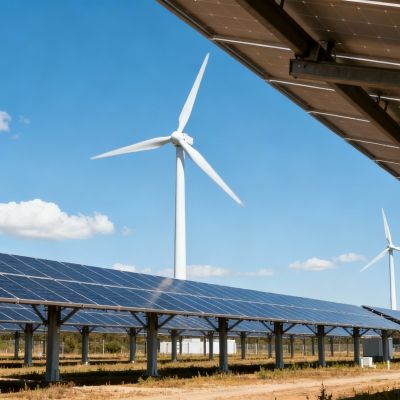Dunkelflaute - what to do when there is no wind or sun?
On May 3, VITO/EnergyVille hosted a webinar on dunkelflaute in collaboration with the RMI, as part of the completion of the EPOC project. The webinar explained the concept of dunkelflaute and explored ways to address periods of low solar and wind. In it, Francois Duchene (RMI) provided an analysis from a climate perspective and Partha Das (VITO/EnergyVille) discussed the impact of dunkelflaute on the backup needs for molecules. Since the impact of dunkelflaute affects all of us, in this article we walk you through the webinar’s key takeaways.

The climate point of view
The IPCC rapport
The 2021 IPCC Report shows that human influence has warmed the climate at a rate unprecedented in at least the past 2000 years. This is because our energy consumption today still comes largely from fossil fuels.
In this context, Duchene mentions the IPCC Interactive Atlas as a new tool for flexible spatial and temporal analyses of much of the observed and predicted climate change information. For Western Europe, the Interactive Atlas predicts an increase in average surface temperatures, extreme heat, drought, heavy rainfall, severe storms and river flooding at a 2°C warming. In addition, cold spells, winter frosts and average wind speed will decrease.
Dunkelflaute: what's in a name?
“Dunkelflaute” essentially means that not enough electricity from wind and solar panels is available to run engines. “Dunkelflaute” is the combination of two German words: “dunkelheit” meaning darkness and “windflaute” meaning weak wind. Both conditions clearly affect renewable energy production.
According to Duchene, the problem is that there is no consensus on a formal definition of “dunkelflaute” in the scientific literature. Although different publications use different definitions, similarities can be noted. Typically, these are the thresholds associated with energy production, duration and spatial extent.
The RMI definition
In order to formulate their own definition of dunkelflaute, the RMI examined how dunkelflaute statistics depend on their identification threshold using a general approach. Also, the optimal PV/wind mix was considered, as well as its dependence on dunkelflaute severity and duration in and around Belgium. Finally, the impact of climate change of dunkelflaute was examined.
For their definition, the RMI translated the common idea of a rare event to studying precisely low occurring events, ranging from 1 event per year to 1 event per 30 years. The RMI focused mainly on climate change impacts, with no assumptions about storage facilities, interconnections, technological improvements or societal changes.
Dunkelflaute events were then defined as the “balance events” with the lowest return periods (from 1 event per year to 1 event every 30 years). For the definition, Duchene mentioned that different durations of dunkelflaute were considered, ranging from 6 hours to one month. In addition, all possible mixes of PV and wind and their effect on dunkelflaute were examined.
The RMI study
For their study, the RMI used high-resolution data, consisting of climate data and electricity-demand data. As for the ideal mix to minimize the dunkelflaute impact, the optimal balance depended heavily on the duration in terms of severity, which is shown in Chart 1. Depending on the duration, clearly not the same amount of PV was needed to compensate for dunkelflaute.
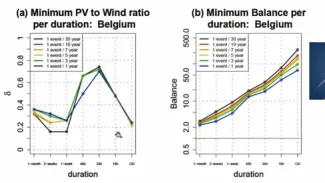
But when does dunkelflaute strike? According to Duchene, more than 70% of dunkelflaute typically occurs in the winter season. But the results, shown in Chart 2, indicate that a wind-dominated mix had dunkelflaute in all four seasons, while a PV-dominated mix showed dunkelflaute in the winter season. A balanced mix was characterized by dunkelflaute in winter and autumn. From these results, Duchene concluded that the best way to deal with dunkelflaute periods, is not to fall back on systems with only full PV or full wind turbines.
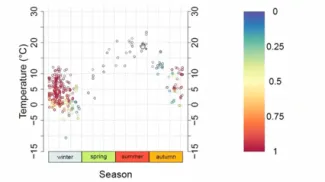
Another question that may arise is the following: if dunkelflaute occurs in Belgium, can electricity be supplied from neighboring countries? The result of the study, shown in Chart 3, reveals that most of Belgium’s neighboring countries faced dunkelflaute at the same time as Belgium. Since they experience similar problems during this period, it is not obvious that they will be able to supply electricity to Belgium.
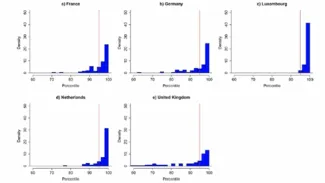
For the future climate effect, the increased severity of dunkelflaute was mainly due to the expected decrease in wind production during that period, shown in Chart 4. Indeed, in the near future (2021-2050) an increase in dunkelflaute by 3% could be expected, and in the far future (2051-2080) by 10%. Thus, Duchene concluded that the number of dunkelflaute in our regions would slightly increase.

Impact on molecule backup requirements
In the second part of the webinar, Partha Das (VITO/EnergyVille) gave an idea of how to overcome a dunkelflaute in the Belgian energy system. In this part of the webinar, a dunkelflaute was considered from the point of view of energy system planning.
Energy system planning
Energy system planning are the activities performed to design future system portfolios. Future pathways are optimized to achieve policy objectives.
Several modeling frameworks are available for energy system planning, such as TIMES, MESSAGE, and OSeMOSYS. In the EPOC project, a TIMES model was developed with three regions for Belgium, representing Wallonia, Flanders and Brussels.
Two scenarios considered
Two situations were considered for the study under limited solar and wind availability. Das designated the first scenario as Dunkelflaute, which was interpreted as the worst dunkelflaute duration in the past, namely three weeks in 2004. During this period, the solar and wind capacity factors were 3,5% and 13,5% respectively. The second scenario was referred to as Extreme Dunkelflaute, which represented an extreme case where solar and wind were not available. In both cases, a limited possibility of power import from the neighboring countries was considered.
Results
The dunkelflaute scenarios can be bridged by different technologies, which are shown in Chart 5.
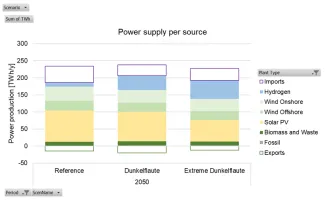
Chart 5 shows that hydrogen is the most interesting solution to bridge dunkelflaute in 2050. Indeed, in the Dunkelflaute scenario, there is 8,75 GW of H2 capacity and 42 TWh of H2-based electricity production in 2050. In the Extreme Dunkelflaute scenario, that rises to 13,6 GW in terms of H2 capacity and 54 TWh of H2-based electricity production in 2050.
The results show that biomass produced electricity can also contribute to bridging dunkelflaute. In the Dunkelflaute scenario and the Extreme Dunkelflaute scenario, the biomass-based capacity is 2,3 and 2,1 GW, respectively.
Disclaimers
Das mentioned that Nuclear SMR technology could also contribute to bridging dunkelflaute, but it was not modelled in this study. The results of the SMR scenario have been published in previous studies, which can be accessed here.
Das added that this study focused primarily on Belgium, which is only a small country on a European scale. Next steps for the study would include expanding the energy system planning related to dunkelflaute on a wider spatial scale.
Conclusion
We can conclude from the webinar that dunkelflaute negatively affects our electricity production. It is thus important to understand what dunkelflaute is and how it can be addressed.
Therefore, please find a summary of the main points of the webinar here:
- The severity of a dunkelflaute greatly depends on its duration. Depending on the duration, not the same amount of PV is needed to tackle a dunkelflaute.
- Relying on systems with only full PV or only full wind turbines is not the best way to deal with dunkelflaute.
- If a dunkelflaute occurs in Belgium, chances are that neighboring countries also suffer from it, and thus it is not obvious that they can supply Belgium with electricity.
- In the near future, we can expect a small increase in dunkelflauts.
- Several technologies can be used to tackle a dunkelflaute, of which hydrogen seems to be the most interesting. Biomass produced electricity and nuclear NSMR technologies can also contribute to bridging a dunkelflaute.
The EPOC-project
This webinar is part of the series of webinars organized by EnergyVille to conclude the EPOC project. In this context, the EPOC Final Event also took place on May 9 in Genk.
Within the EPOC project, 13 research institutions in Belgium have spent the last 4 years working on energy system models related to the security of electricity supply.




